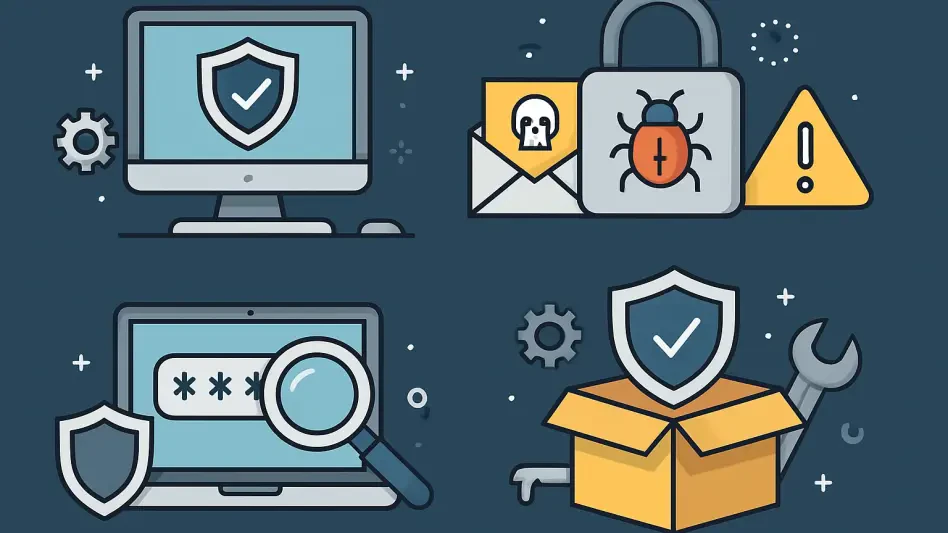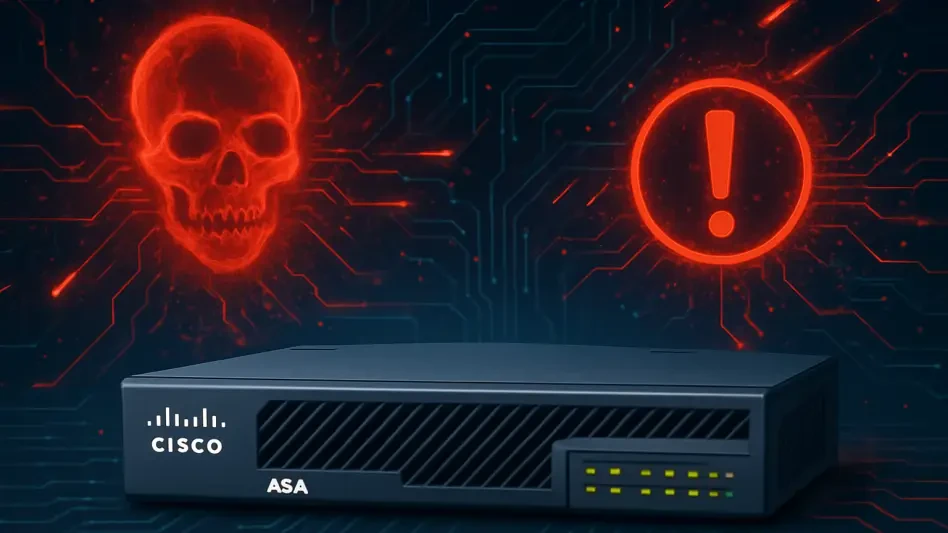In an era where cyber threats are becoming more sophisticated and damaging, organizations must adopt innovative strategies to safeguard their digital assets. The concept of “accelerated security fusion,” highlighted in the NTT DATA Technology Foresight 2025 report, offers a transformative approach to cybersecurity. By integrating advanced technologies such as threat intelligence, machine learning, and real-time analytics, accelerated security fusion creates a unified defense system capable of proactively identifying and addressing vulnerabilities before they can be exploited.
This cutting-edge strategy aims to protect against increasingly complex threats by merging advanced technologies across various security domains. The ultimate goal is to foster a proactive security posture, enabling organizations to swiftly identify vulnerabilities, streamline response efforts, and enhance their overall security framework. By implementing accelerated security fusion, organizations can stay one step ahead of cybercriminals and ensure a more resilient digital landscape.
The Role of Zero-Trust Architecture
One critical technology central to accelerated security fusion is the zero-trust architecture, which employs a stringent security model to verify every user and device attempting to access resources, regardless of their location. This model enforces the principle of least privilege, continuously validating identities to prevent unauthorized access and mitigate risks. Unlike traditional perimeter-based defenses, zero-trust assumes that threats can emerge from both within and outside the network, necessitating constant vigilance and verification.
In today’s cybersecurity landscape, where traditional defenses are no longer sufficient, zero-trust architecture is indispensable. By requiring continuous verification, zero-trust ensures that only authorized users and devices gain access to sensitive resources, effectively reducing the likelihood of breaches and data leaks. This approach proves particularly effective in protecting against insider threats and compromised accounts, providing organizations with a robust defense mechanism against modern cyber threats.
Furthermore, zero-trust architecture addresses the challenges posed by an increasingly remote and distributed workforce. With more employees accessing corporate resources from various locations and devices, maintaining a secure perimeter is nearly impossible. Zero-trust mitigates this issue by continuously verifying and authenticating users and devices, ensuring that only legitimate entities can access critical resources. This heightened security measure is crucial for safeguarding sensitive data and maintaining organizational integrity.
Behavioral Analytics for Enhanced Security
Another pivotal technology within the accelerated security fusion strategy is behavioral analytics, which utilizes AI to establish baselines of “normal” user behavior. By detecting anomalies that might indicate insider threats or compromised accounts, behavioral analytics enhances security by identifying unusual activities that traditional methods could easily overlook. This technology is particularly valuable for detecting zero-day attacks, which exploit unknown vulnerabilities in software or hardware, thereby safeguarding modern applications in software supply chains and cloud-native environments.
Behavioral analytics continuously monitors user behavior, allowing organizations to quickly identify and respond to potential threats, minimizing the impact of security incidents. By providing insights into user activities and identifying patterns that may suggest malicious intent, this technology creates a more secure environment. It helps organizations differentiate between legitimate and suspicious activities, ultimately strengthening their overall security posture.
In addition, behavioral analytics plays a crucial role in creating resilience within an organization’s cybersecurity framework. By establishing a baseline of normal behavior, it can detect deviations that may signal an impending attack. These insights enable security teams to respond proactively, reducing the risk of a successful breach. The intelligence gathered through behavioral analytics also informs future security strategies, helping organizations stay ahead of emerging threats and continuously improve their defenses.
Cyber Fusion Centers: A Unified Defense Strategy
Cyber fusion centers are centralized hubs where threat intelligence, incident response, and risk management are integrated into a unified, proactive cybersecurity strategy. Leveraging advanced threat protection, automation, and real-time analytics, these centers can rapidly detect and mitigate security incidents. Cyber fusion centers foster collaboration among cybersecurity functions, enhancing an organization’s ability to anticipate, respond to, and counteract sophisticated cyber threats.
The integration of various cybersecurity functions within a cyber fusion center allows for a more coordinated and efficient response to threats. By pooling resources and expertise, cyber fusion centers enable organizations to quickly identify and address vulnerabilities, reducing the risk of significant security breaches. They offer a comprehensive approach to cybersecurity, combining advanced technologies with real-time data to create a robust defense system.
Moreover, cyber fusion centers play a pivotal role in streamlining incident response processes. By utilizing automation and real-time analytics, they can quickly identify and prioritize threats, enabling security teams to respond more effectively. This approach minimizes the potential damage caused by security incidents and ensures that organizations can maintain operational continuity. Cyber fusion centers also facilitate information sharing and collaboration between different teams, fostering a culture of continuous improvement and innovation in cybersecurity practices.
The Importance of Encryption Technologies
Encryption technologies remain a core component of cybersecurity, with ongoing research focusing on more advanced methods to protect sensitive information. NTT Group’s pioneering work in fully homomorphic encryption, which allows computations on encrypted data without needing decryption, exemplifies the latest advancements in this field. Such technology provides a powerful means of processing sensitive information securely, without exposing it to potential threats during processing.
As cyber threats continue to evolve, the need for robust encryption methods becomes paramount. Fully homomorphic encryption offers a promising solution by enabling secure data processing without compromising confidentiality. This technology allows organizations to perform computations on encrypted data, ensuring that sensitive information remains protected at all times. It significantly enhances data protection and privacy, making it a critical component of any comprehensive cybersecurity strategy.
Advancements in encryption technologies are essential for securing modern digital environments. With increasing amounts of data being generated and shared, organizations must adopt advanced encryption methods to protect sensitive information from unauthorized access and breaches. By implementing fully homomorphic encryption, organizations can achieve a higher level of data security, ensuring that sensitive information remains confidential and protected against evolving cyber threats.
Advanced Threat Detection and Response
Integrating organizational strategies, new technologies, and user engagement to proactively address cyber risks is essential for advanced threat detection and response. Fostering a culture of preparedness and continuous monitoring allows organizations to swiftly detect and mitigate threats. Utilizing AI-powered tools enhances defenses against both known and emerging challenges, providing organizations with the necessary insights and capabilities to identify and address vulnerabilities in real-time.
By adopting a proactive approach to threat detection and response, organizations can stay ahead of potential threats and minimize the impact of security incidents. Continuous monitoring and AI-powered tools provide the necessary insights and capabilities to identify and address vulnerabilities in real-time. By leveraging these technologies, organizations can enhance their defenses and ensure a more resilient security posture.
In addition, advanced threat detection and response require a collaborative approach that involves all stakeholders within the organization. By fostering a culture of cybersecurity awareness and preparedness, organizations can ensure that employees are vigilant and proactive in identifying and reporting potential threats. This collaborative effort, combined with advanced technologies, creates a comprehensive defense strategy that effectively counters cyber risks and protects the organization’s digital assets.
Fortifying Digital Identities
Improving digital identity management is crucial for safeguarding sensitive data and securing access to digital platforms. Protecting systems against breaches while creating a seamless user experience boosts customer loyalty. Leveraging AI for real-time anomaly detection and frictionless authentication enhances security and user satisfaction, ensuring that only authorized users can access critical resources.
Effective digital identity management involves implementing advanced authentication methods and continuous monitoring to reduce the risk of unauthorized access and data breaches. By leveraging AI-powered tools, organizations can detect anomalies in real-time, ensuring that any suspicious activity is promptly addressed. This approach enhances security while providing a frictionless user experience, ultimately boosting customer loyalty and trust.
Furthermore, fortifying digital identities is essential for maintaining compliance with regulatory requirements. Organizations must ensure that only authorized users have access to sensitive information, reducing the risk of data breaches and ensuring that they meet stringent security standards. By implementing robust digital identity management practices, organizations can protect their digital assets and maintain the trust of their customers and stakeholders.
Information Safeguarding
Implementing measures to protect personal and organizational sensitive data from unauthorized access and breaches is vital for information safeguarding. Demonstrating a commitment to privacy attracts customers, fostering trust and loyalty in a data-aware marketplace. Enabling continuous monitoring and management strengthens data security, ensuring that sensitive information remains protected against evolving cyber threats.
Organizations must prioritize data protection to maintain customer trust and comply with regulatory requirements. By implementing robust security measures and continuously monitoring data access, organizations can safeguard sensitive information and prevent unauthorized access. This approach not only enhances security but also builds customer confidence, fostering a loyal customer base in a competitive marketplace.
Moreover, information safeguarding involves a comprehensive approach that includes encryption, access controls, and continuous monitoring. By implementing multiple layers of security, organizations can ensure that sensitive information remains protected at all times. This proactive approach to data protection is essential for maintaining the integrity and confidentiality of organizational and personal data, ultimately strengthening the overall security framework.
Managing Cyber Risks
One essential technology in the accelerated security fusion strategy is behavioral analytics. This utilizes AI to establish baselines of “normal” user behavior, enabling it to detect anomalies that might indicate insider threats or compromised accounts. By highlighting unusual activities that traditional methods could easily miss, behavioral analytics boosts security. It’s particularly effective for spotting zero-day attacks that exploit unknown software or hardware vulnerabilities, thus protecting modern applications in software supply chains and cloud-based environments.
Behavioral analytics continuously tracks user behavior, allowing organizations to swiftly identify and address potential threats, thereby minimizing the impact of security incidents. By providing insights into user activities and spotting patterns that suggest malicious intent, it helps differentiate between legitimate and suspicious actions, ultimately fortifying overall security.
Moreover, this technology is crucial for fostering resilience within an organization’s cybersecurity framework. By setting a baseline for normal behavior, it can detect deviations that may indicate an impending attack. These insights enable security teams to act proactively, reducing the risk of a successful breach. The intelligence gathered also enriches future security strategies, helping organizations stay ahead of emerging threats and continually refine their defenses. In essence, behavioral analytics plays a vital role in enhancing security posture and ensuring robust protection against evolving cyber threats.







